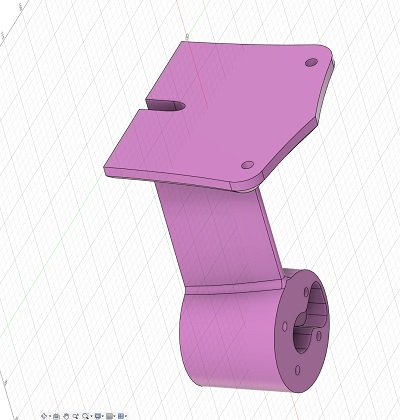I decided to create a separate topic for my tow boogie. It will also be in the “quick and dirty” style. Therefore, for now I will post here several photos of the board at different stages of testing.


I decided to create a separate topic for my tow boogie. It will also be in the “quick and dirty” style. Therefore, for now I will post here several photos of the board at different stages of testing.


I’m currently working on a tow boogie with two motors 65161 and I just discovered that it is twice as expensive as a tow boogie with one motor 65161. Oh god, someone please stop me!
Why two 65161? For deep water starts and differential steering?
It will be a beast!
As long as the board planes you can usually get up. I got up on a 11L 130cm long Armstrong board @95kg with a single 65161 and a 13s pack.
The tow boogie builds look like a lot of fun but i have too many projects!
What is the best benefit of riding with a boogie vs efoil?
Is it worth squeezing in a build?
Removing weight from the board means you get the true foil feel.
I have a 12kg efoil setup and it’s the most efoil fun I’ve ever had!
It may look a bit redundant, but… These devices are gathering dust on my shelf and the idea that I will be able to develop the project further makes me happy.
I think the good thing about the tow boogie is that no matter what weight it is, you always have a great feel for the foil)
With the only downside being extra things to carry and set up…
Everything has its price
Using a Tow Boogie is an actual sport, you finish a session exhausted, especially after catching 100+ waves and pumping back for more waves and then to the boogie. My average HR is around 150-160 for an hour and a half.
It’s more of a work out than sup foil, or prone.
I find efoil is like going for a e-bike ride round a retirement village.
The Boogie is the future.
Well motivated. I’ve only efoiled since my ocean and wind is a bit too far away. I’d guess the huge benefit to both efoil and boogie is if i ever go foiling or surfing in the wild then i’ll already have a lot of hours on the board.
OK, i’ll build a boogie 
Flat water is easy for me to understand as it’s kind of like a ski boat that you travel behind.
However I’m having a little trouble understanding the logistics of using a tow boogie in surf riding.
Assume you are by yourself
Use the tow to get out to where the waves are right to begin, tow yourself onto foil and let go of handle and foil around while the boogie is then out of your control.
Does the boogie generally stay where you left it and is it easy to get back to and how do you do that or does it get caught in a wave and surf it’s way to shore where you get it and rinse/repeat???
Thats pretty awesome, did you manage that in flat water or waves?
In the waves, I’ve spent years in the surf though, sup foiling, kiting and winging so pretty comfortable out there.
The boogie still uses a surprising amount of power when following along beside you.
I drive my boogie out through the shore break with me paddling on the foil behind, trying not to be directly behind it on big days.
Once out the back you whip in to unbroken swell and usually pull off before they break well away from other surfers. I either pump back to the Boogie or drive it beside me while on the swell.
Aim is to not get into the white water, and not too far from the Boogie.
I’ve probably done 1000km + so far in the surf. Here’s a typical morning Boogie.
Nice explanation Thanks.
One question on technique. When you do pump back to it can you somehow pick up the handle “on the fly” or do you stop beside it and then do a full start to get going again?
I’m 95 kg and 1.85cm tall using a pretty small board, so getting the timing right is pretty tricky.
I’ve done it a few times, and I should practice a lot more…
A few friends who are lighter, shorter and more skilled can do I routinely which saves battery life.